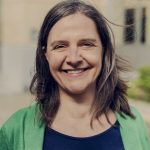The link between carving plates, the great collapse, and the Dutch city of Heerlen
Policy op-ed by Claire Roumet
Imagine my surprise at seeing a new personal development magazine with a “survivalist” editorial line instead of the usual “learn how to breathe properly and enjoy small moments of happiness and beauty” the last time I was at the train station. And the first tutorial was on how to carve a plate out of a log!
The printed media are only a reflection of our fears and desires and if we have sunk so low it is because the collapse theory is riding high. Too many magazines offer individual solutions, judge our behaviours but offer nothing but a new packaging. Fortunately, positive stories about urban renewal, local farming, environmentally-friendly initiatives and diversity also make the headlines. What is lacking, however, is the big picture, a common project.
In his book, the mayor of Grenoble, Eric Piolle, presents a project that the municipal team has been testing for some years now and which gives a clear direction through three objectives for guiding local collective action and transforming the city:
- “provide a safe environment”,
- “cherish common goods”, and
- “nurture the desire for meaning”.
I will let you find out (in French only) how these objectives are implemented on a daily basis. The book shows how this compass leads to rethinking the role of elected representatives and local institutions in a world undergoing deep changes. As yes, our world is changing and yes, we need to change our methods and horizons.
When reality meets fiction
In his novel “Les furtifs” (The Stealthies), a best-seller among French-speaking thirtysomethings, Alain Damasio describes a dystopian world where cities have been bought by global brands and where access to the fashionable districts is reserved for ‘Platinium’ citizens. Rebellion is driven by those who recognise the value of all living beings, even those we do not know yet. This novel is incredibly rich and cannot be summed up in one “premise”. Cities are no longer gathering and knowledge-sharing places but battle fields for power against those in power. This fiction echoes what is at play during local elections, where often it is asserted that the future belongs to cities, as shown by the recent elections in Istanbul and Budapest where the newly elected mayors are challengers to their respective Prime Ministers.
I have regular contact with local elected representatives and it is the mission of our association to support networking among them. Not all cities have yet a structured agenda for their future nor do they put municipal action in a wider perspective. But many elected representatives share the same enthusiasm, the same deep-rooted desire to make life more beautiful, and the feeling that our cities have a key role to play in the transformations to come. Last week, the deputy mayor of the Romanian municipality of Alba Iulia, Gabriel Plesa, called out ministry officials about the urgent need for national institutions to break out of the stasis in which they are trapped. A call for the future to be not limited to quid pro quos between places of power but to include a fair distribution, a true partnership. The future has so much more to offer than the great collapse!
I often ponder the fact that we have very few opportunities to make these positive energies come together, discuss them and propose a shared agenda to national and European institutions. I hope that our next annual “Cities & Citizens Energy Forum” conference with the participation of the European Commission’s Vice-President Frans Timmermans will be a first step in this direction. But to achieve this, we will need all our members!

